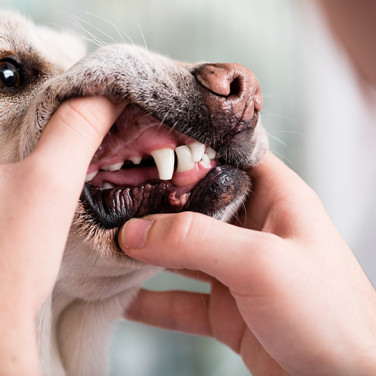DISEASES
Canine Cataracts - Causes, Symptoms, and Surgery Treatments
페이지 정보
본문
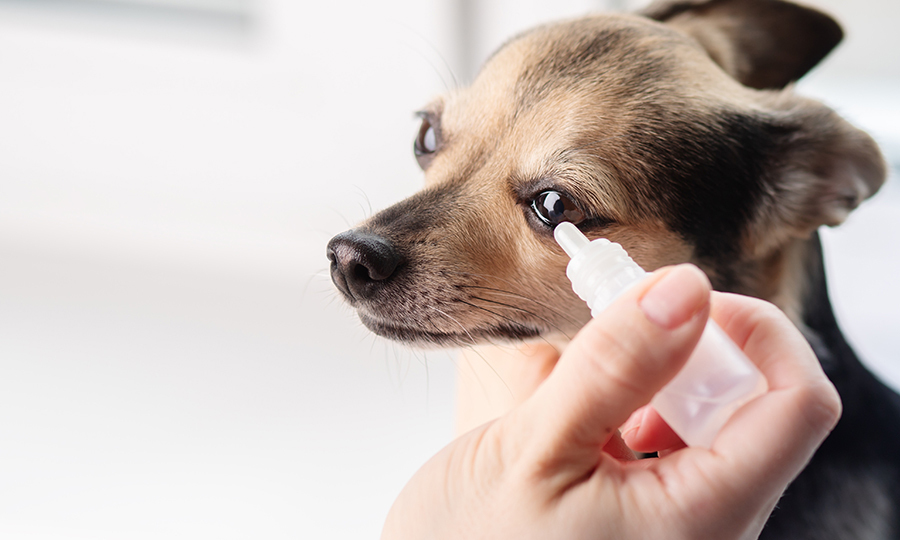
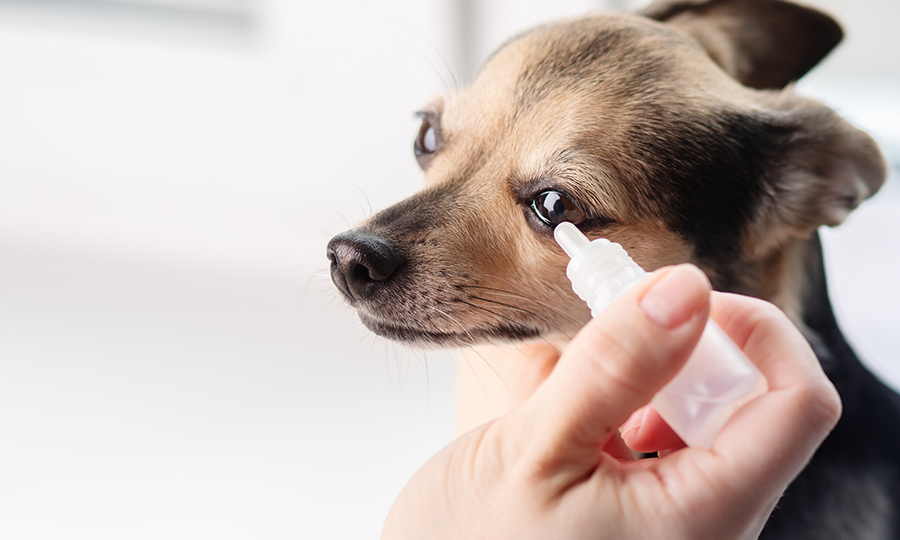
What are cataracts in dogs?
Cataracts are a disease that affects the eye's lens, causing it to become cloudy in appearance. The lens is typically clear and transparent, allowing light to pass through and form an image on the retina. This allows your dog to see objects. However, when the protein in the lens is altered, it becomes cloudy, leading to poor light transmission and the deterioration of vision. In severe cases, cataracts may eventually lead to blindness.
Cataracts usually start small and do not significantly affect vision in the early stages. However, as time passes, they will continue to grow and eventually cover the entire lens. In this process, cataracts can also raise the risk of other diseases besides vision loss.
Fortunately, cataracts can be managed with medication and surgical treatment. In general, treatment can help prevent further vision loss and improve overall eye health in dogs with cataracts.
Common causes of cataracts in dogs
The causes of cataracts can be largely divided into congenital cataracts and acquired cataracts.
Breeds prone to cataracts
Congenital cataracts can be closely linked to hereditary factors and can cause cataracts from a young age.
The following breeds are known to be at a congenital risk of cataracts:
- Cocker Spaniels
- Labrador Retrievers
- French Bulldogs
- Habanezs
- Poodles
- Boston Terriers
- Bichon Frizes
- Miniature Schnauzers
- Siberian Husky
Acquired cataracts
Acquired cataracts can be caused by aging, diabetes, or other diseases.
-
Aging:
Cataracts may simply develop due to again with no underlying disease.
-
Diabetes:
It’s fairly common for dogs with diabetes to develop cataracts due to the high blood sugar levels leading to sugar entering the lens of a diabetic dog. This process causes the eyes to turn cloudy. This form of cataracts tends to develop quickly and can cause blindness.
-
Eye disease and inflammation:
Eye diseases such as chronic uveitis, glaucoma, or eye injury can progress to cataracts in dogs.
Symptoms of canine cataracts
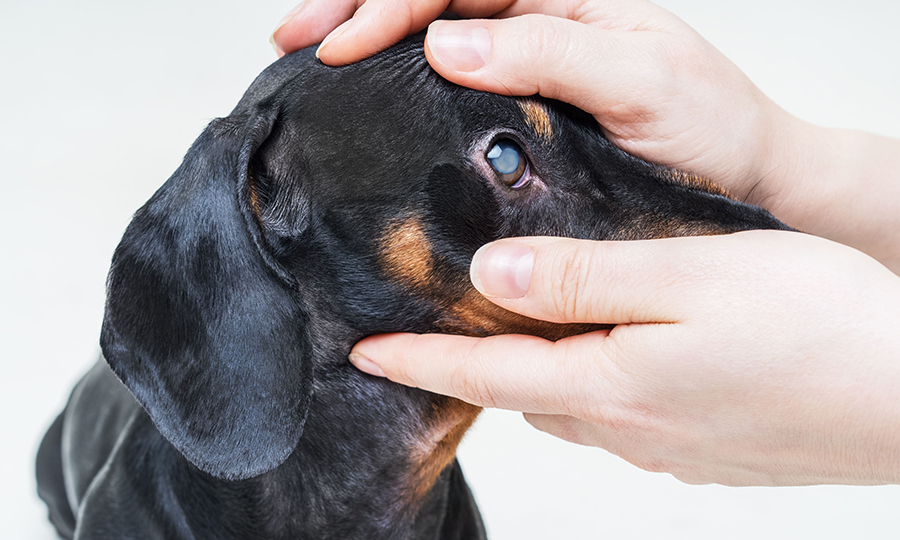
-
Cloudy eyes
It may appear partially or entirely.
-
Reduced vision
When a cataract covers 30% or less of the lens or affects only one eye's lens, vision loss may not be noticeable. However, if the opacity spreads over 60% of the lens, vision may deteriorate, and ultimately, when it reaches 100%, vision is lost.
-
Pain
Chronic cataracts can cause severe pain due to inflammation inside the eye.
When to see a vet for cataracts in dogs
Congenital cataracts in certain breeds can result in vision loss at an early age. If left untreated, the cataract may progress, leading to inflammation around the lens and subsequent complications such as uveitis, glaucoma, lens luxation, and retinal detachment. Ultimately, permanent eye damage and irreparable vision loss can occur, even with surgical intervention. It is always best for your dog’s health to see a vet if you notice any changes in their eyes, or if you notice signs of vision loss. This will include running into familiar objects and furniture, difficulty finding their food or toys, and bumping into walls.
How to manage canine cataracts at home
Unfortunately, cataracts in dogs require surgical treatment to restore vision. Failure to address cataracts promptly can result in chronic progression, leading to severe eye inflammation. It is advisable to opt for surgery during the early stages of cataracts. If you observe hazy eyes or notice any symptoms of vision problems in your dog, it is crucial to take your pet to a veterinarian for a thorough examination.
Diagnosing canine cataracts
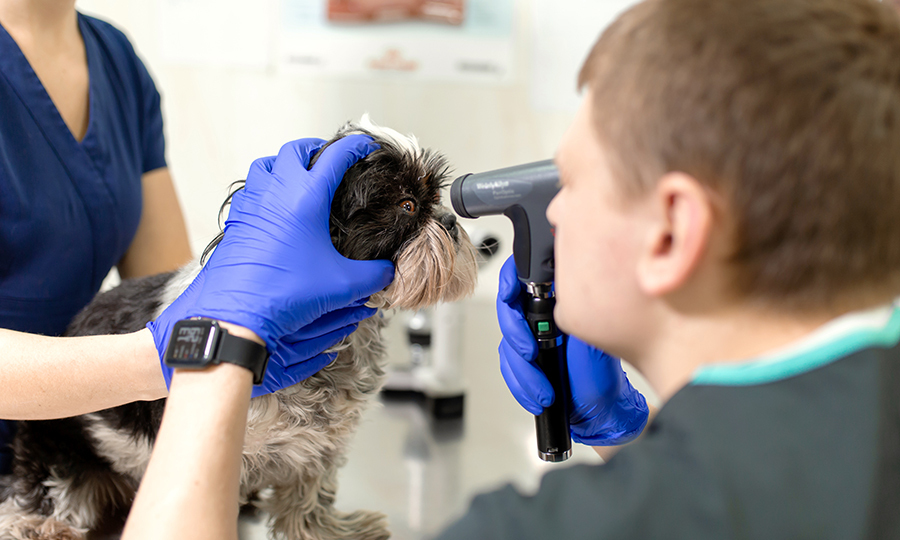
If you take your dog to the vet suspecting cataracts, your veterinarian may ask you questions about your dog's vision. They may inquire about when you first noticed the cloudiness developing and how fast your pet's symptoms have worsened.
Afterward, the following tests can be performed to make an accurate diagnosis:
-
Ophthalmic examination
The eye's overall structure can be examined through the use of light, while uveitis, glaucoma, and retinal detachment can be detected by monitoring intraocular pressure and performing ultrasound tests. In addition, visual acuity can be assessed with an electroretinogram test.
-
Blood test
Blood tests may be done to rule out underlying conditions, such as diabetes, that can cause cataracts.
Nuclear sclerosis is a disease that can cause the lens to turn white as well. Your veterinarian will be able to differentiate between the two and conduct the necessary tests. Despite the condition, a bluish haze can still be visible behind the pupil, and vision may still be present in cases of nuclear sclerosis.
Stages of canine cataracts
Depending on the breed of the dog and the underlying cause, the degree of progression of cataracts is classified as follows.
-
Incipient:
The size is very small and must be magnified for diagnosis. Cataracts cover less than 15% of the lens and do not usually cause visual impairment.
-
Immature:
Cataracts occupy more than 15% of the lens and exist in multiple layers or areas of the lens. During an ophthalmologic exam, the retina behind the lens can be seen, and mild visual acuity may appear.
-
Mature:
The cataract covers the entire lens, and the retina is not visible on ophthalmic examination. Slight to significant vision loss may be present.
-
Hypermature:
The lens starts to shrink and the lens capsule looks wrinkled causing complete loss of vision. Uveitis often develops at this stage as well.
Canine cataract treatment and surgery
The management of cataracts can be achieved through either surgery or medication, and the decision on which option to pursue ultimately rests with the veterinarian, who takes into account the stage of the cataract and other relevant circumstances.
-
Cataract surgery
Cataracts are typically treated with surgery, specifically through a procedure known as phacoemulsification. During this procedure, the old lens is removed and replaced with an artificial lens, resulting in the restoration of vision. Side effects are minimal, and patients can quickly resume their regular activities after the surgery.
If the cataract advances to the mature or hypermature stage, there is an increase in inflammation inside the eye. Therefore, it is advisable to carry out the surgery during the early or immature stage, as it has an approximate success rate of 80-90%. Given that the operation involves anesthesia, the decision to proceed with the surgery takes into account the dog's health condition, life expectancy, and eye condition.
Commonly known side effects of cataract surgery include inflammation inside the eye and glaucoma, as well as corneal ulcer, infection, and retinal detachment.
Following the surgery, the dog's eye will be managed with the help of eye drops and oral medications, which aid in the recovery process. The dog's activities may need to be restricted for a certain period, and they will be required to wear a neck collar to protect their eyes. After the surgery, periodic check-ups will also be necessary.
-
Medication
Topical medications, including eye drops, can be effective in halting the progression of cataracts. In cases where cataracts are caused by diabetes, topical agents containing ARIs (aldose reductase inhibitors) are known to have some impact, but their high cost and the need for use every 8 to 12 hours can pose a challenge. Eye drops are also commonly used to alleviate the eye inflammation that often accompanies cataracts.
How can I help prevent cataracts in my dog?
Cataracts can be caused by genetic factors, which is why it is advisable to refrain from breeding if your dog is diagnosed with cataracts. Additionally, diabetes can also lead to cataracts, so it's essential to have your dog's eyes regularly checked if they have diabetes. If you notice your dog's eyes beginning to appear white or if there are any signs of vision problems, it is highly recommended to visit a hospital for a thorough examination. There are no viable prevention plans to avoid cataracts but you can prevent blindness from occurring if cataracts develop in your dog.
Find out more about your dog’s symptoms and diseases on the Buddydoc app!
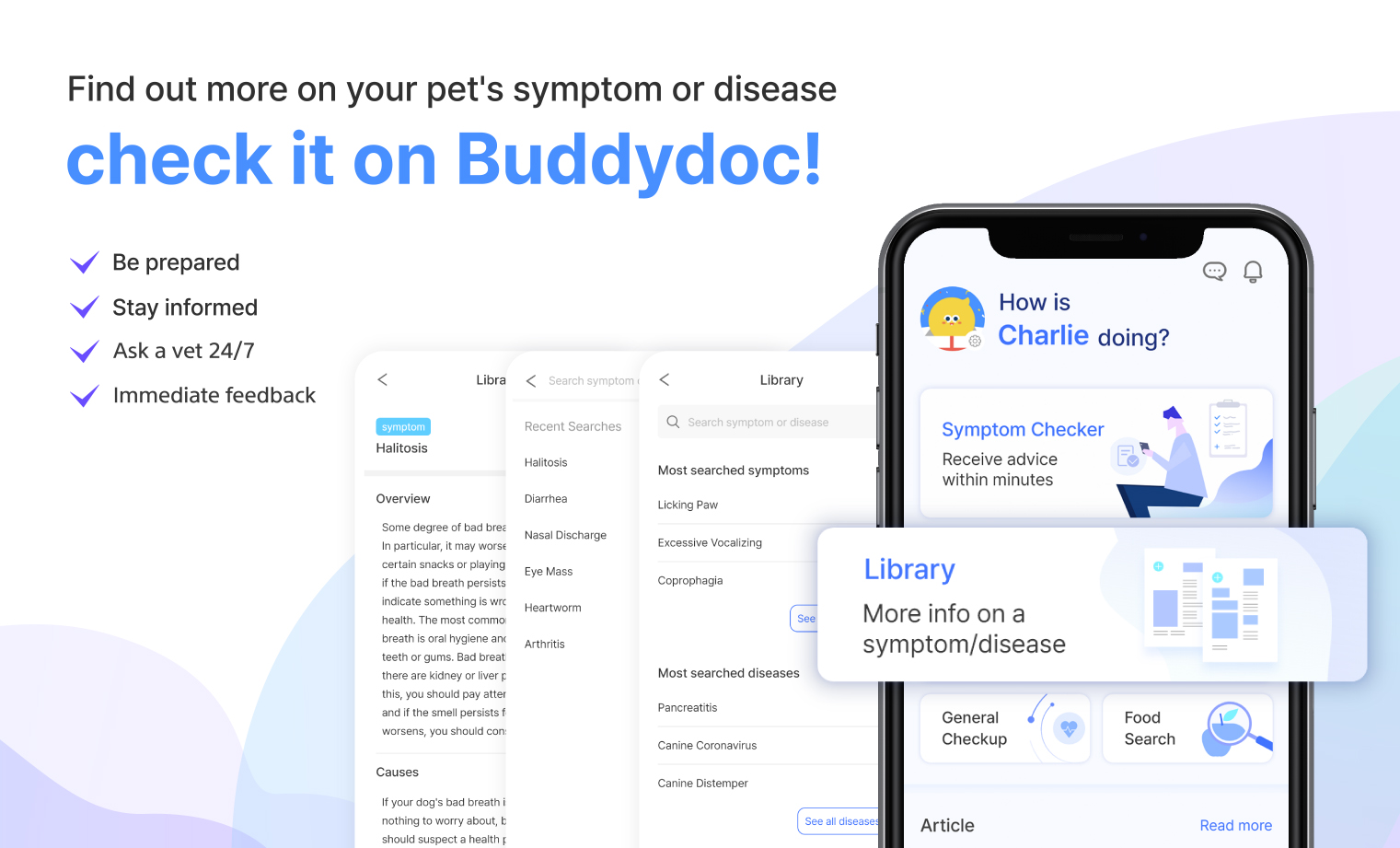
The Buddydoc library is filled with everything you’d want to know about each symptom and disease your pet may experience. If you would like to find out more about the causes, signs, treatments, preventions, and more for your dog’s disease. Try out the Buddydoc app and search for your pet’s symptoms or diseases in the Buddydoc library.




